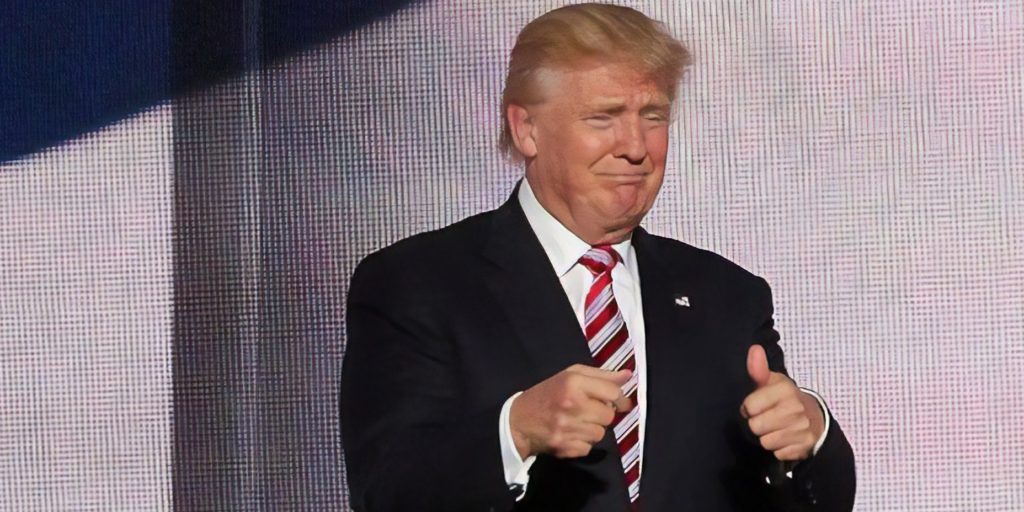- Trademarks Act not meant to protect Canadian sensibilities - April 25, 2024
- U.S. lawmakers tee up copyright protection for golf courses - March 6, 2024
- Remain vigilant over your licensees in trademark agreements - January 22, 2024
By Tony Poland, LegalMatters Staff • U.S. President Donald Trump’s recent press conference invitation gaffe serves as an example of the trademark infringement “moron in a hurry” test, says Toronto intellectual property lawyer John Simpson.
Trump sent out a tweet following news of Joe Biden’s election victory on Nov. 7 announcing a “big press conference at the Four Seasons in Philadelphia,” which many assumed meant the hotel.
However, he quickly deleted the tweet and replacing it with “Four Season’s Landscaping!”, followed by: “Big press conference today in Philadelphia at Four Seasons Total Landscaping — 11:30am.”
Amid the confusion, it was reported that the Four Seasons Hotel issued their own statement saying, “To clarify, President Trump’s press conference will NOT be held at Four Seasons Hotel Philadelphia. It will be held at Four Seasons Total Landscaping— no relation with the hotel.”
Parking lot press conference
Reporters arrived to find the event was being held in a parking lot outside the landscaping company located between an adult bookstore and a crematorium.
The incident, which was widely mocked on social media, illustrates an established test used in trademark infringement claims, says Simpson, principal of IP and new media law boutique Shift Law Professional Corporation.
“The moron in hurry rule was intended to be an exception to the usual relevant consumer in a hurry confusion analysis,” he tells LegalMattersCanada.ca.. “The test in a trademark infringement case connecting the likelihood of confusion is to consider the likelihood that the average consumer, somewhat in a hurry, is going to be confused into thinking the defendant is or is somehow associated with the plaintiff.
- Comparing an iconic apple to a pear in a trademark fight
- Copying online images to cut corners can come at a cost
- Cannabis company liable for using Toys R Us inspired trademark
“It has to be someone of average intelligence,” Simpson adds. “Just because there was some actual confusion by someone doesn’t mean there was an infringement.”
He explains the test came about thanks to a “witty British judge who said the test must be the average consumer in a hurry, not the dumbest one.”
The phrase was first used in1978 by Justice Foster in Morning Star Cooperative Society v. Express Newspapers Limited. The publishers of the Morning Star sought an injunction to prevent Express Newspapers from launching a tabloid to be called the Daily Star. In ruling against the Morning Star, Foster said, “If one puts the two papers side by side I for myself would find that the two papers are so different in every way that only a moron in a hurry would be misled.”
‘Number of factors to consider’
Simpson says although the “likelihood of confusion is always the test in a trademark infringement case, there are a number of factors to consider.”
“The threshold issue in a likelihood of confusion analysis is who is the relevant person. Who was confused? The relevant consumer in Canadian trademark law is the casual consumer somewhat in a hurry who is to be distinguished from the moron in a hurry,” he says. “In this case, we are dealing with a landscaping business and a luxury hotel chain. They are very distinct. If it was Four Seasons motel then there might very well be a good infringement case.”
Another consideration would be how widely used the name is, Simpson says.
“If it’s very common then the average consumer is going to be expected to be able to distinguish between different uses,” he says. “Four Seasons, as many would appreciate, is a name that’s used in many different ways. Where a term is commonly used the average consumer is going to be more aware of the differences. You pay more attention.
“That they are in completely different businesses is just one of the factors to consider,” Simpson adds. “The likelihood of confusion is going to be much less if the goods and services are completely distinct.”


Pingback: F1 champion Hamilton spins out in trademark rights showdown | LegalMattersCanada